Caravaggio's crimes exposed in Rome's police files
- Published
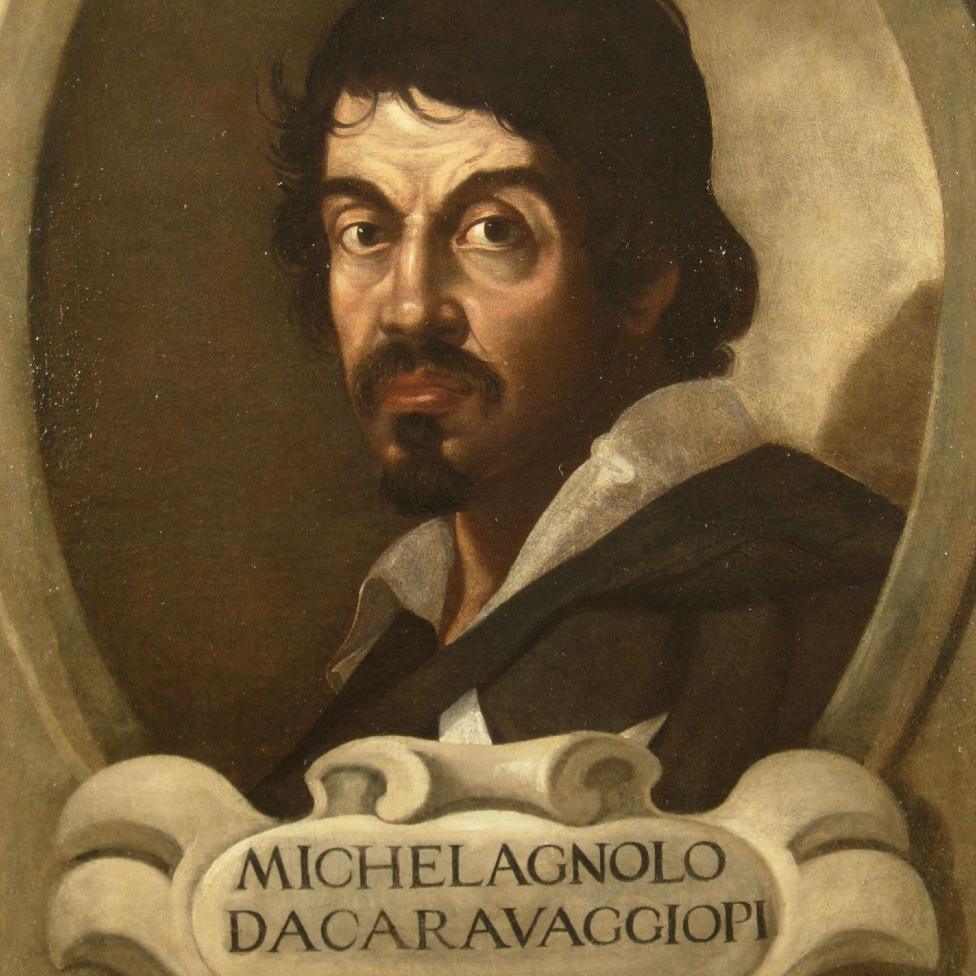
Four hundred years after his death, Caravaggio is a 21st Century superstar among old master painters. His stark, dramatically lit, super-realistic paintings strike a modern chord - but his police record is more shocking than any modern bad boy rock star's.
An exhibition of documents at Rome's State Archives throws vivid light on his tumultuous life here at the end of the 16th and the beginning of the 17th centuries.
Caravaggio's friendships, daily life and frequent brawls - including the one which brought him a death sentence from Pope Paul V - are described in handwritten police logs, legal and court parchments all bound together in heavy tomes - and carefully preserved in this unique repository of Rome's history during the Renaissance and after.
The picture the documents paint is that of an irascible man who went about town carrying personal weapons - a sword and dagger, and even a pistol - without a written permit, boasting that he enjoyed the protection of the ecclesiastical authorities who commissioned some of his most famous works.
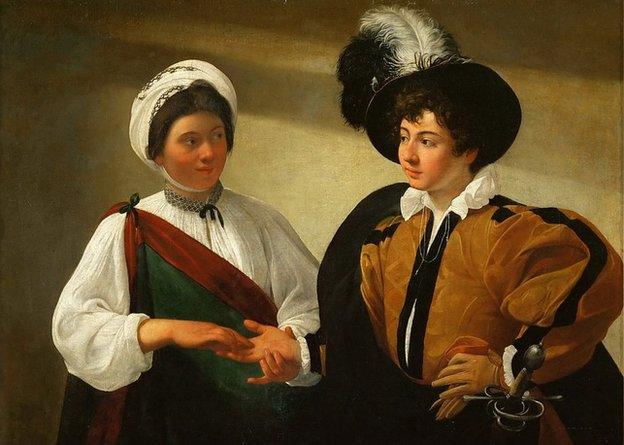
Caravaggio's painting, The Fortune Teller
He had frequent brushes with the police, got into trouble for throwing a plate of cooked artichokes in the face of a waiter in a tavern, and made a hole in the ceiling of his rented studio, so that his huge paintings would fit inside. His landlady sued, so he and a friend pelted her window with stones.
All these events are documented with eyewitness accounts in this collection of yellowing parchments - difficult to decipher for the non-specialist, but rich in contemporary detail for a skilled archivist.

Caravaggio's police dossier
4 May 1598: Arrested at 2- 3am near Piazza Navona, for carrying a sword without a permit
19 November 1600: Sued for beating a man with a stick and tearing his cape with a sword at 3am on Via della Scrofa
2 October 1601: A man accuses Caravaggio and friends of insulting him and attacking him with a sword near the Piazza Campo Marzio
24 April 1604: Waiter complains of assault after serving artichokes at an inn on the Via Maddalena
19 October 1604: Arrested for throwing stones at policemen near Via dei Greci and Via del Babuino
28 May 1605: Arrested for carrying a sword and dagger without a permit on Via del Corso
29 July 1605: Vatican notary accuses Caravaggio of striking him from behind with a weapon
28 May 1606: Caravaggio kills a man during a pitched battle in the Campo Marzio area

The documents provide a completely new account of his most serious brawl in May 1606 in which he killed a certain Ranuccio Tommassoni. This brawl - just like a modern-day clash between warring gangs - was arranged in advance by eight participants who have all now been named.
Caravaggio and his three companions, one a Captain in the Papal army, met their rivals at a pallacorda court in the Campo Marzio area, where the artist lived. (Pallacorda was a game played with a ball with a string attached - an early form of tennis, which some older Romans still remember seeing played in the streets of the capital in the mid-20th Century.)
Some biographers have suggested that there may have been an argument over a woman, but the text of the court report suggests the quarrel broke out over a gambling debt. Caravaggio killed Ranuccio and fled the city.
One of Caravaggio's own supporters was seriously injured. Taken to prison, he was subsequently put on trial, and the new evidence emerges from the report of this trial.
Caravaggio himself fled south to Malta and to Sicily where he received important new art commissions. The death sentence from Pope Paul V - whose portrait he had just painted - was imposed in absentia for this offence.

Assault with a plate of artichokes
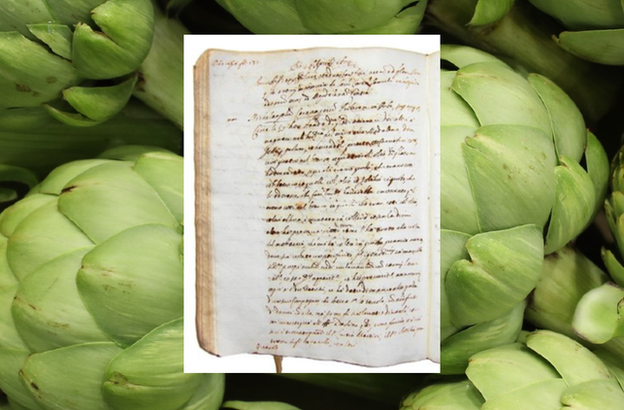
Statement to police by Pietro Antonio de Fosaccia, waiter, 26 April 1604:
About 17 o'clock [lunchtime] the accused, together with two other people, was eating in the Moor's restaurant at La Maddalena, where I work as a waiter. I brought them eight cooked artichokes, four cooked in butter and four fried in oil. The accused asked me which were cooked in butter and which fried in oil, and I told him to smell them, which would easily enable him to tell the difference.
He got angry and without saying anything more, grabbed an earthenware dish and hit me on the cheek at the level of my moustache, injuring me slightly... and then he got up and grabbed his friend's sword which was lying on the table, intending perhaps to strike me with it, but I got up and came here to the police station to make a formal complaint...

The documents also shed light upon Caravaggio's death at Porto Ercole, north of Rome in July 1610. He did not die alone on a beach after escaping from his creditors and the police, as some of his biographers say, but in a hospital bed.
Only 38 years old, he was on his way back to the city from the south in the belief that his powerful friends had secured a pardon for his offences.
The documents that record Caravaggio's life in Rome are written in a mixture of Latin legal jargon and racy Italian vernacular that any modern Roman could easily understand.
They needed careful restoration, as parts of the parchment were breaking up - the acid in the ink literally devouring the pages.
A handful of sponsors including a local bus company and the Italian Land Rover distributors helped to fund the work. The Italian Culture Ministry has slashed budgets this year as part of Italy's austerity programme and libraries and archives have been particularly badly hit.
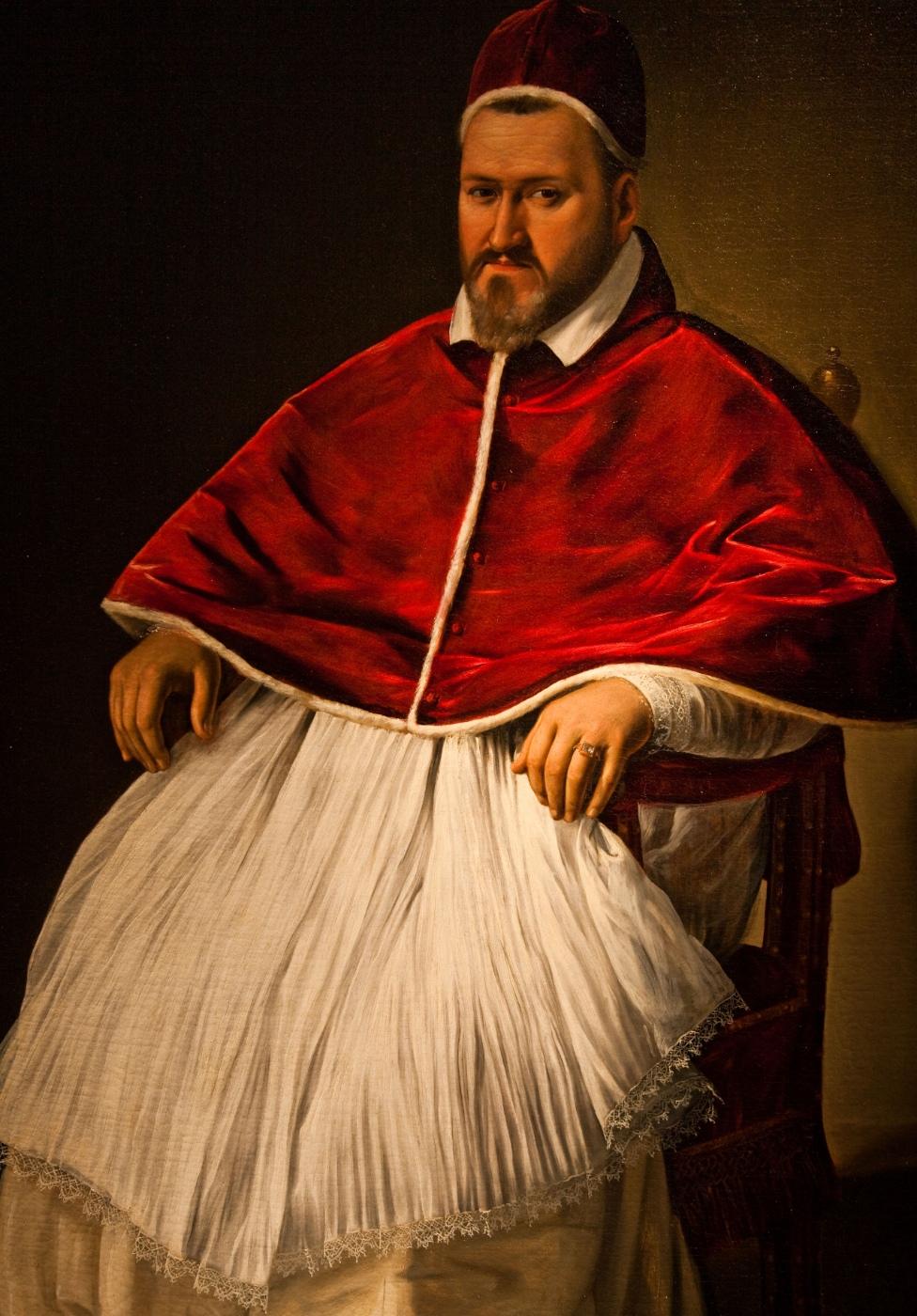
Caravaggio's 1605 portrait of Pope Paul V - who sentenced him to death the following year

The restored files provide the historical context for the sellout show in Rome last year, when more than three-quarters of a million visitors queued for hours in stifling summer heat to see some 50 of the mad, bad and dangerous painter's works.
"A window has been opened into the past," said Federica Galloni, head of culture for the Lazio region at the opening of the new exhibition.
All the events described in the documents occurred within walking distance of one another in a small area of the city.
Caravaggio's haunts such as the Osteria del Moro (inn of the Moor) and Osteria della Lupa (inn of the she-wolf) are long gone, and the church of St Ambrose has been subsumed in a larger, more recent church on the Via del Corso.
But the narrow streets are still there, often clogged with parked motorbikes, but still dotted with medieval buildings that Caravaggio would have known. Walking along them, after visiting the exhibition, the vivid tales of the painter's rumbustious life linger in the imagination.
Arrested for carrying a sword and dagger
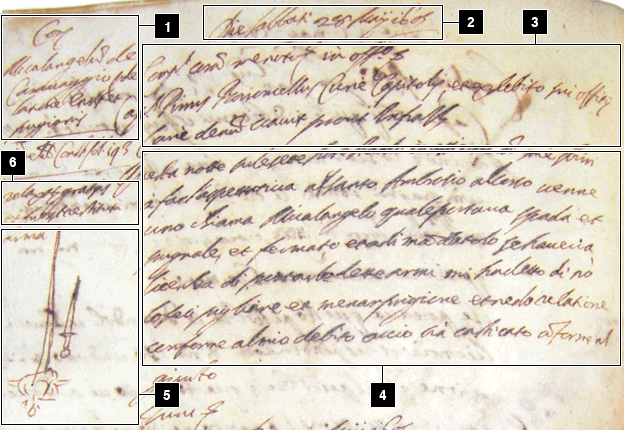
Full translation (see below for notes one to six):
Against Michelangelo De Caravaggio charged with illegal possession of a sword and a dagger.
See Arrest Reports Folio 193
Released without charge and weapons were returned to accused.
Saturday 28 May 1605
Appeared before me, notary, in my office, Captain Pino, Senior officer of the Capitoline Police who, acting in his official capacity, made the following report, namely:
Today at the seventh hour [between two and three in the afternoon], I was on duty with my men patrolling near the church of Saint Ambrose on the Via del Corso, when one by the name of Micalangelo came by carrying a sword and a dagger. I stopped him and asked him whether he had a permit to carry the said weapons, and he replied "No". I arrested him and took him to prison and hereby give this report in due and correct form according to the law.
Notes:
1. Contra Micalangelum de Caravaggio / Against Michelangelo De Caravaggio
This is in Latin. Rome in the 17th Century was a state run by the Roman Catholic church, which used Latin for all official documents.
2. Die sabbato 28 maii 1605 / Saturday, 28 May 1605
At this stage, the 33-year-old Caravaggio was one of the most admired and sought-after artists in Rome.
3. Arresting officer Captain Pino
Pino is described as senior officer of the Capitoline Police - the Capitoline Hill is one of the seven hills of Rome.
4. Captain Pino's statement
This is in Italian, because the notary, or his clerk, was taking down a verbatim note of the captain's words.
5. Sketch of sword and dagger
Why was the sketch made? Possibly because there was some doubt about whether Caravaggio was the real owner. Caravaggio would have carried weapons as style accessories, but also because the streets were dangerous, especially after dark.
6. Released without charge and weapons returned to the accused
Caravaggio was arrested because he had no written permit to carry weapons. However, his patron was Cardinal Francesco Del Monte, the governor of the city, who had verbally instructed senior police officers to allow Caravaggio to carry weapons. Once the police on duty confirmed that this was the case, Caravaggio was released.
Document images courtesy of Italy's State Archive, and the Ministry of Culture